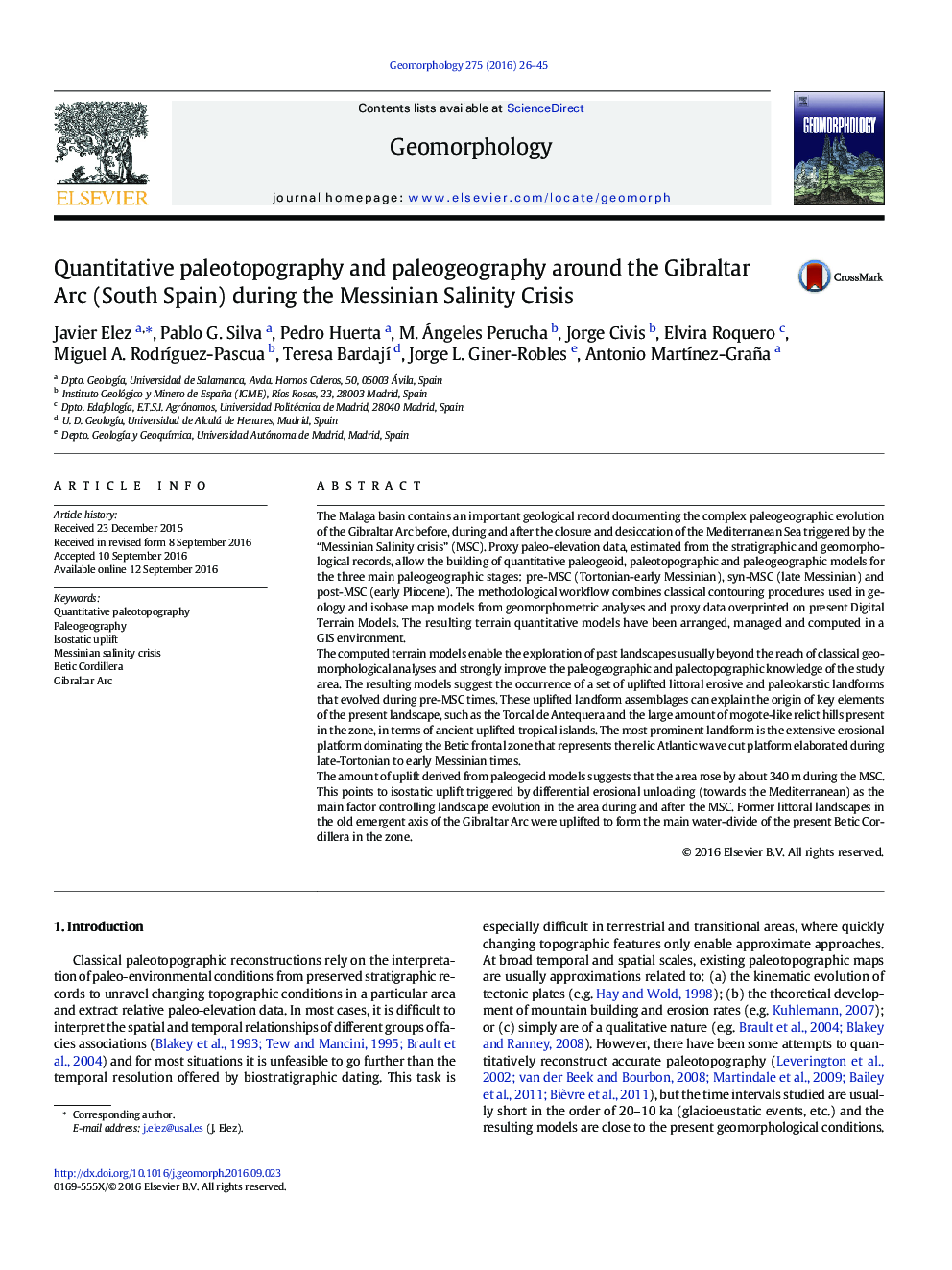| کد مقاله | کد نشریه | سال انتشار | مقاله انگلیسی | نسخه تمام متن |
|---|---|---|---|---|
| 4683876 | 1635374 | 2016 | 20 صفحه PDF | دانلود رایگان |

• We offer a method to estimate quantitative topography of past geological scenarios.
• Results strongly improve the paleographic knowledge of the study area around the MSC.
• Isostatic uplift due to erosional unload controls the landscape evolution.
The Malaga basin contains an important geological record documenting the complex paleogeographic evolution of the Gibraltar Arc before, during and after the closure and desiccation of the Mediterranean Sea triggered by the “Messinian Salinity crisis” (MSC). Proxy paleo-elevation data, estimated from the stratigraphic and geomorphological records, allow the building of quantitative paleogeoid, paleotopographic and paleogeographic models for the three main paleogeographic stages: pre-MSC (Tortonian-early Messinian), syn-MSC (late Messinian) and post-MSC (early Pliocene). The methodological workflow combines classical contouring procedures used in geology and isobase map models from geomorphometric analyses and proxy data overprinted on present Digital Terrain Models. The resulting terrain quantitative models have been arranged, managed and computed in a GIS environment.The computed terrain models enable the exploration of past landscapes usually beyond the reach of classical geomorphological analyses and strongly improve the paleogeographic and paleotopographic knowledge of the study area. The resulting models suggest the occurrence of a set of uplifted littoral erosive and paleokarstic landforms that evolved during pre-MSC times. These uplifted landform assemblages can explain the origin of key elements of the present landscape, such as the Torcal de Antequera and the large amount of mogote-like relict hills present in the zone, in terms of ancient uplifted tropical islands. The most prominent landform is the extensive erosional platform dominating the Betic frontal zone that represents the relic Atlantic wave cut platform elaborated during late-Tortonian to early Messinian times.The amount of uplift derived from paleogeoid models suggests that the area rose by about 340 m during the MSC. This points to isostatic uplift triggered by differential erosional unloading (towards the Mediterranean) as the main factor controlling landscape evolution in the area during and after the MSC. Former littoral landscapes in the old emergent axis of the Gibraltar Arc were uplifted to form the main water-divide of the present Betic Cordillera in the zone.
Figure optionsDownload as PowerPoint slide
Journal: Geomorphology - Volume 275, 15 December 2016, Pages 26–45